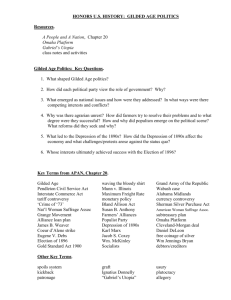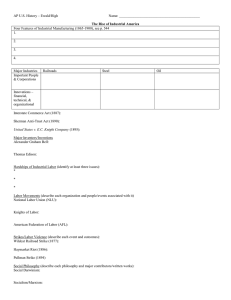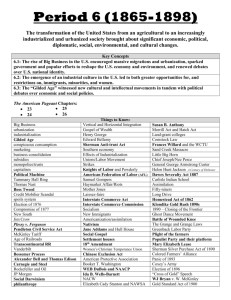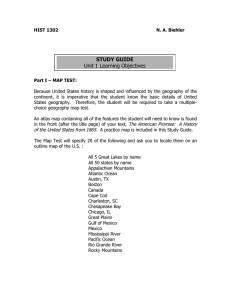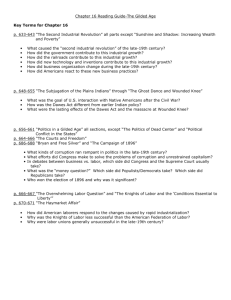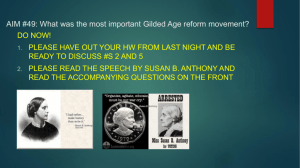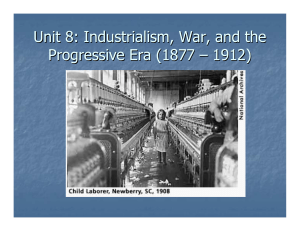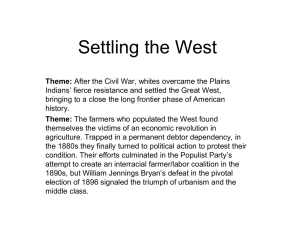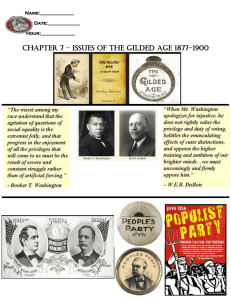Chapter 20 Study Guide - Episcopal Academy, The
advertisement
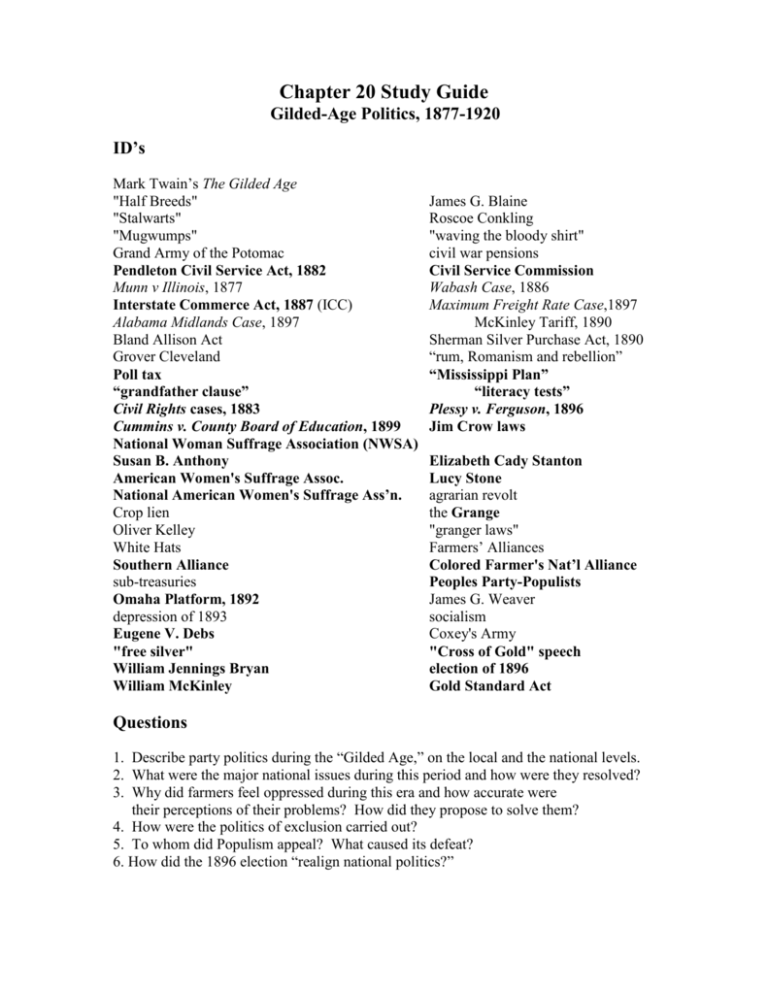
Chapter 20 Study Guide Gilded-Age Politics, 1877-1920 ID’s Mark Twain’s The Gilded Age "Half Breeds" "Stalwarts" "Mugwumps" Grand Army of the Potomac Pendleton Civil Service Act, 1882 Munn v Illinois, 1877 Interstate Commerce Act, 1887 (ICC) Alabama Midlands Case, 1897 Bland Allison Act Grover Cleveland Poll tax “grandfather clause” Civil Rights cases, 1883 Cummins v. County Board of Education, 1899 National Woman Suffrage Association (NWSA) Susan B. Anthony American Women's Suffrage Assoc. National American Women's Suffrage Ass’n. Crop lien Oliver Kelley White Hats Southern Alliance sub-treasuries Omaha Platform, 1892 depression of 1893 Eugene V. Debs "free silver" William Jennings Bryan William McKinley James G. Blaine Roscoe Conkling "waving the bloody shirt" civil war pensions Civil Service Commission Wabash Case, 1886 Maximum Freight Rate Case,1897 McKinley Tariff, 1890 Sherman Silver Purchase Act, 1890 “rum, Romanism and rebellion” “Mississippi Plan” “literacy tests” Plessy v. Ferguson, 1896 Jim Crow laws Elizabeth Cady Stanton Lucy Stone agrarian revolt the Grange "granger laws" Farmers’ Alliances Colored Farmer's Nat’l Alliance Peoples Party-Populists James G. Weaver socialism Coxey's Army "Cross of Gold" speech election of 1896 Gold Standard Act Questions 1. Describe party politics during the “Gilded Age,” on the local and the national levels. 2. What were the major national issues during this period and how were they resolved? 3. Why did farmers feel oppressed during this era and how accurate were their perceptions of their problems? How did they propose to solve them? 4. How were the politics of exclusion carried out? 5. To whom did Populism appeal? What caused its defeat? 6. How did the 1896 election “realign national politics?”
